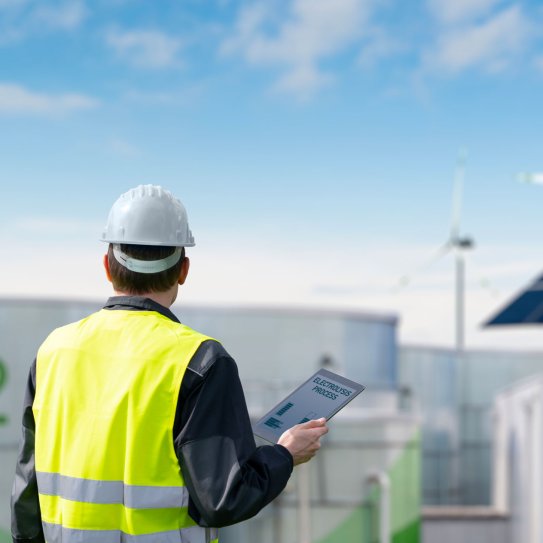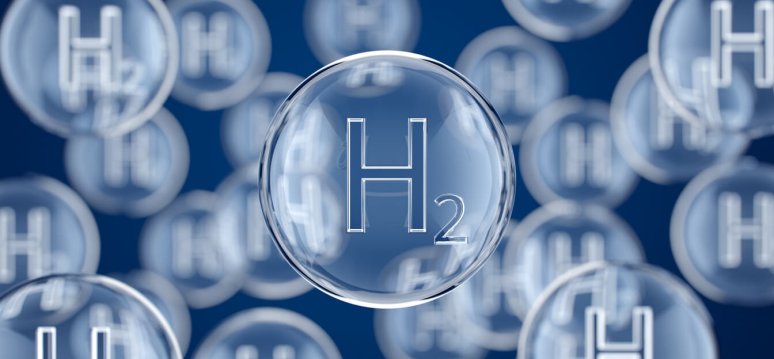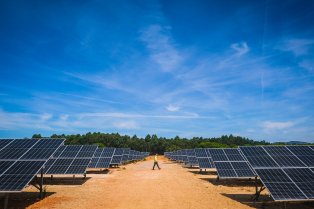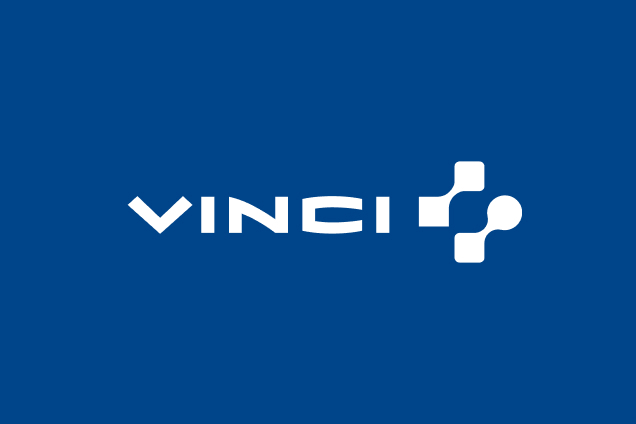Using green hydrogen as a driving force to decarbonise economies
Construction, energy and concessions: all the Group's major businesses have an active role to play in the various stages of the hydrogen value chain, from production through to storage, distribution and use. To contribute to the sector’s soaring growth, VINCI was involved in creating the world's largest investment fund in 2021 to promote the development of a low-carbon hydrogen infrastructure. At Leonard, VINCI's foresight and innovation platform, a think tank is studying the prospects offered by this new energy vector.

Hydrogen: the missing link in the energy transition?
To achieve the goals of the Paris Climate Agreement and keep global warming below two degrees Celsius, it is necessary to move away from fossil fuels, such as oil, coal and natural gas. This means finding alternative solutions. These include renewable energies, led by solar and wind power.
Although they are developing rapidly, their intermittent nature means that they cannot meet all energy needs. Low-carbon hydrogen could help overcome this problem. Alongside already established energies, such as nuclear power, it is one of the most promising candidates for completing this “missing link” in the energy transition.
The advantages of hydrogen
Hydrogen features the highest energy-to-mass ratio. In other words, one kilogramme of hydrogen releases three times more energy than one kilogramme of petrol. In the form of dihydrogen (H2), it can be stored and transported like any other gas and can be used as a primary energy source when burned in boilers, engines and turbines - a combustion process that emits not CO2, but water vapour.
It can also be used to power fuel cells to generate electricity or provide energy storage solutions for wind farms and solar power plants. It can also help form hydrocarbons by being combined with carbon (CO or CO2) recovered from the atmosphere or industrial fumes. These hydrocarbons are then considered “low-carbon”, since they use the carbon that has already been emitted by other industries.
The main challenge is to produce hydrogen in sufficient quantities and at a reasonable price using non-CO2 emitting processes. Through its main Member States, Europe is sending out a clear signal of its determination to be a pioneer in the development of this sector and is planning to increase the share of hydrogen in its energy mix from the current 2% to 13 or 14% by 2050.

VINCI plays a role throughout the hydrogen value chain
Production
Under the aegis of a new brand known as Hyfinity, VINCI Construction has brought together all the expertise required for design-build projects for carbon-free hydrogen production units. It delivers turnkey projects to its clients, whether energy producers or large industrial companies. VINCI is a partner and shareholder of Genvia, a company created in 2021 on the initiative of the CEA (French Atomic Energy Commission) and Schlumberger, whose objective is to industrialise a promising high-temperature electrolyser technology. Actemium (VINCI Energies) is supporting the company in its plans to industrialise these electrolysers.
VINCI is also one of the 30 industrial companies that launched HyDeal Ambition in 2021. The aim is to prepare the European decarbonised hydrogen industry of the future which will take over from the exploitation of fossil fuels.
Storage, transport and distribution
The VINCI Group possesses specialised subsidiaries, such as Geostock, that are able to offer decarbonised hydrogen storage solutions to manufacturers, energy companies and governments. Currently, a quarter of the fossil fuels produced are permanently stored, in particular for strategic state reserves. The storage of hydrogen in tanks or caves is a major challenge for the sector.
Uses
Thanks to its profile as an integrator, combining knowledge of industrial processes and expertise in large-scale fluid and electrical systems, VINCI Energies is ideally positioned to support the industrial energy transition.
On the roads and motorways, the forthcoming arrival of hydrogen-powered vehicles poses a new challenge: refuelling these vehicles at service areas. VINCI Autoroutes is looking into the prospect of developing a number of green hydrogen distribution stations.
The aeronautical sector is also counting on hydrogen to reduce its carbon footprint. Trials are underway in the infrastructures managed by VINCI Airports. A partnership bringing together Airbus and the London Gatwick, Lyon-Saint Exupéry and Kansai airports was launched in 2024 to create hubs encompassing liquid hydrogen supply chains, storage and aircraft refuelling facilities.


